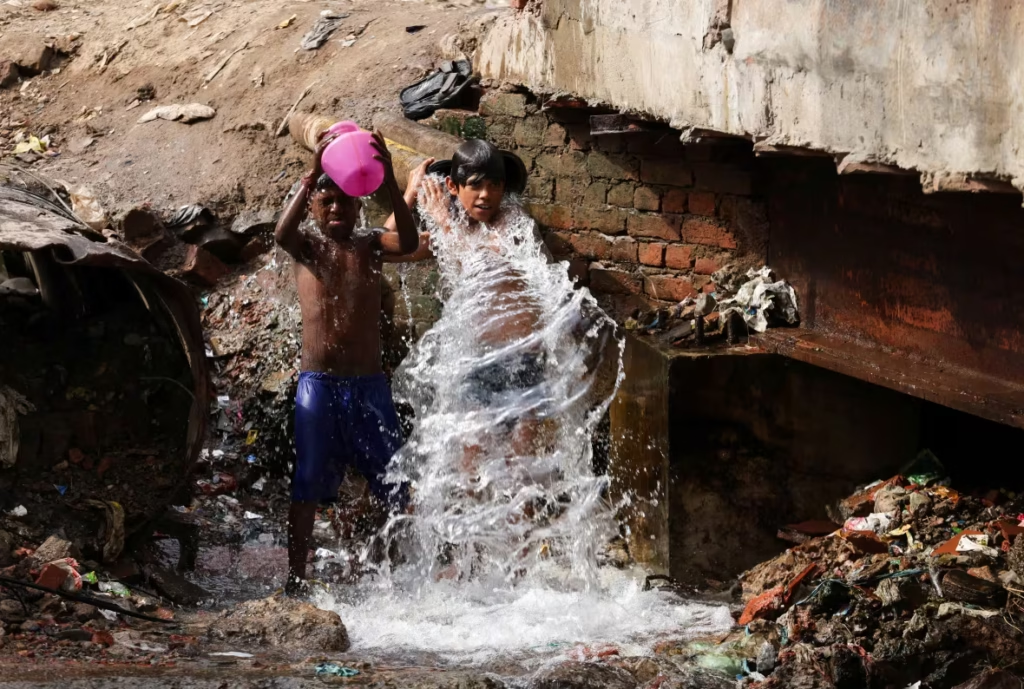“Trapped Under Pressure: How Heat Domes Are Redefining Summer as We Know It”

In recent years, scorching summer temperatures have become increasingly intense and prolonged across parts of the world. Behind many of these relentless heatwaves lies a powerful meteorological phenomenon called a heat dome. Once a relatively obscure term in weather science, heat domes have now entered mainstream discussions as they become more frequent—and more dangerous—due to climate change.
This article explores what a heat dome is, how it forms, its impacts on people and the planet, and why it is reshaping the way we experience summer.
What Is a Heat Dome?
A heat dome is a high-pressure system that traps warm air beneath it—like a lid on a pot. This cap prevents hot air from escaping, causing temperatures to rise continuously for days or even weeks.
- The term “dome” refers to the shape of the high-pressure ridge in the upper atmosphere.
- Beneath it, hot air becomes compressed and stagnant, intensifying the heat.
- The phenomenon can span hundreds or thousands of miles, affecting entire regions at once.
Under a heat dome, daytime temperatures soar, nighttime cooling is minimal, and humidity may spike, creating dangerous conditions for humans, wildlife, and infrastructure.
How Heat Domes Form
Heat domes are created through a combination of atmospheric and oceanic patterns, particularly influenced by:
- Strong, persistent high-pressure systems in the upper atmosphere.
- Shifts in the jet stream, which can stall, allowing the high-pressure system to remain locked in place.
- Ocean surface temperature anomalies, especially in the Pacific (like La Niña or El Niño events), which can disrupt typical wind and pressure patterns.
Warm ocean waters heat the air above them, and if winds push this warm air inland and it becomes trapped under a high-pressure ridge, it forms a heat dome. The longer it stays, the more intense the heat becomes.
Historic Heat Domes and Their Impact
In recent years, several record-breaking heat domes have devastated regions around the world:
- Pacific Northwest (U.S. & Canada, June 2021): Temperatures soared to 49.6°C (121°F) in Lytton, British Columbia—causing widespread deaths, wildfires, and the destruction of the town.
- Europe (2022–2023): Repeated heat domes led to prolonged heatwaves, wildfires, and record-high electricity demand for air conditioning.
- Asia (2023): Countries like India and China experienced extended heat events, with heat indices exceeding safe human thresholds.
These extreme conditions are often accompanied by air quality alerts, droughts, power grid stress, and public health emergencies.

How Heat Domes Affect Daily Life
A heat dome affects virtually every aspect of life:
- Public Health: Increases risk of heatstroke, dehydration, and cardiovascular strain, especially among the elderly and vulnerable.
- Infrastructure: Roads can buckle, railways warp, and power lines sag, while energy grids face massive demand surges.
- Agriculture: Crops wilt or die under sustained heat and lack of rainfall, and livestock suffer from heat stress.
- Wildlife & Environment: Heat domes dry out vegetation, increase the risk of wildfires, and disrupt animal migration and survival patterns.
- Urban Heat Islands: Cities become even hotter, with concrete and asphalt absorbing and radiating heat long into the night.
The Climate Change Connection
While heat domes are natural phenomena, their frequency, intensity, and duration are being amplified by climate change.
- As global temperatures rise, the likelihood of persistent high-pressure systems increases.
- Warming oceans add more energy to the atmosphere, making it easier for heat domes to form.
- Slower-moving jet streams, influenced by Arctic warming, make it easier for weather patterns—including heat domes—to linger over one area.
Climate scientists warn that what was once rare may become the norm, especially during summer months.
How to Prepare and Protect Yourself
Because heat domes develop gradually, early warnings can help mitigate their impact. Public safety steps include:
- Staying indoors during peak heat.
- Hydrating frequently and checking on vulnerable neighbors.
- Using fans and air conditioning wisely—and heading to cooling centers if needed.
- Planning outdoor activities during cooler times of day.
- Following local alerts and emergency guidelines.
Communities and governments must also invest in resilient infrastructure, urban cooling strategies (like green roofs and tree planting), and updated building codes for extreme heat.
Conclusion: A New Climate Reality
Heat domes are no longer rare occurrences—they are becoming a hallmark of summer in many parts of the world. Their destructive potential is a stark reminder that our climate is changing, and with it, the way we live.
Understanding how heat domes form, what fuels them, and how to adapt is crucial. As the Earth continues to warm, heat domes will likely become more frequent and intense, reshaping summers—and forcing us to confront the consequences of a hotter planet.




